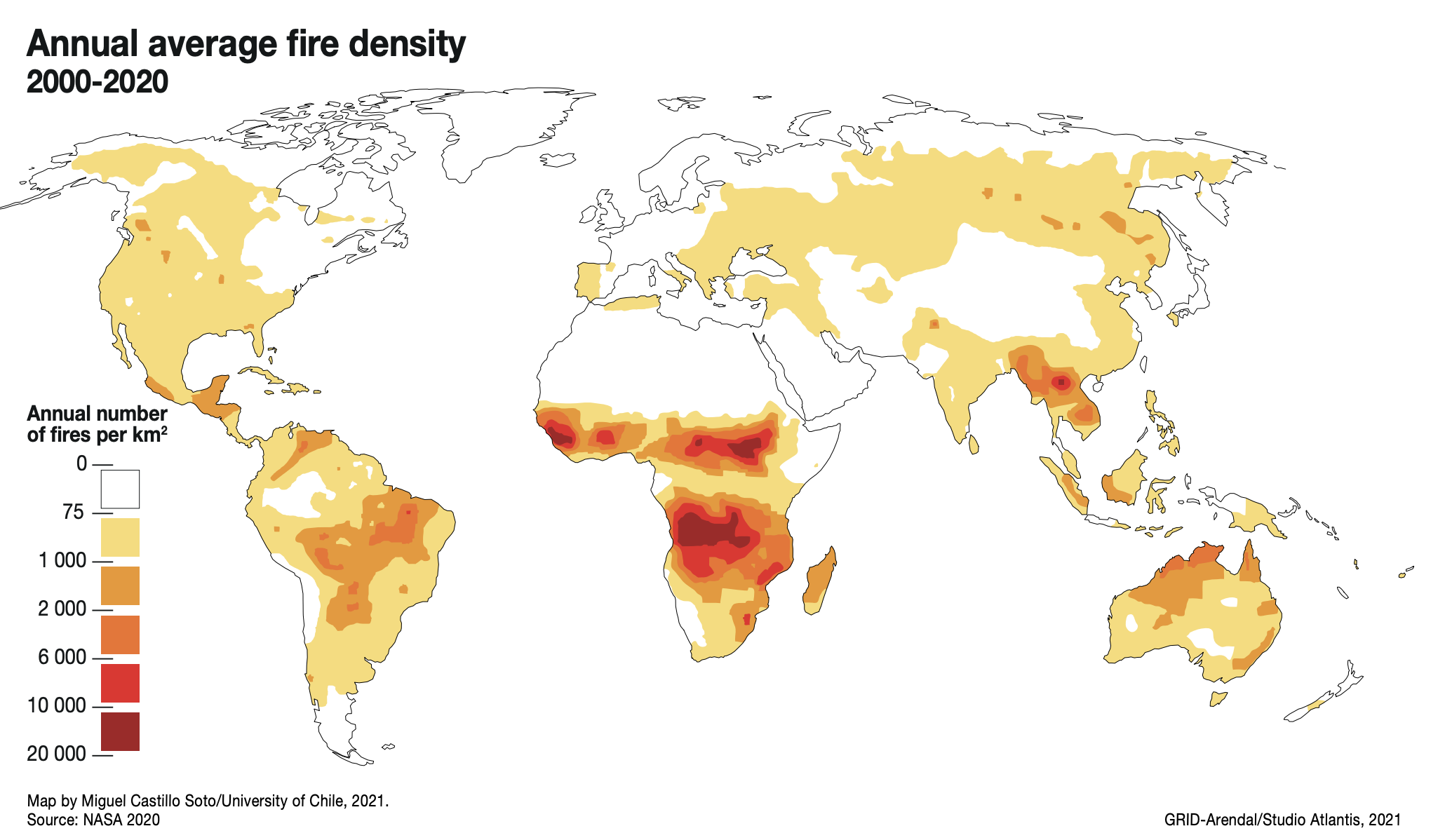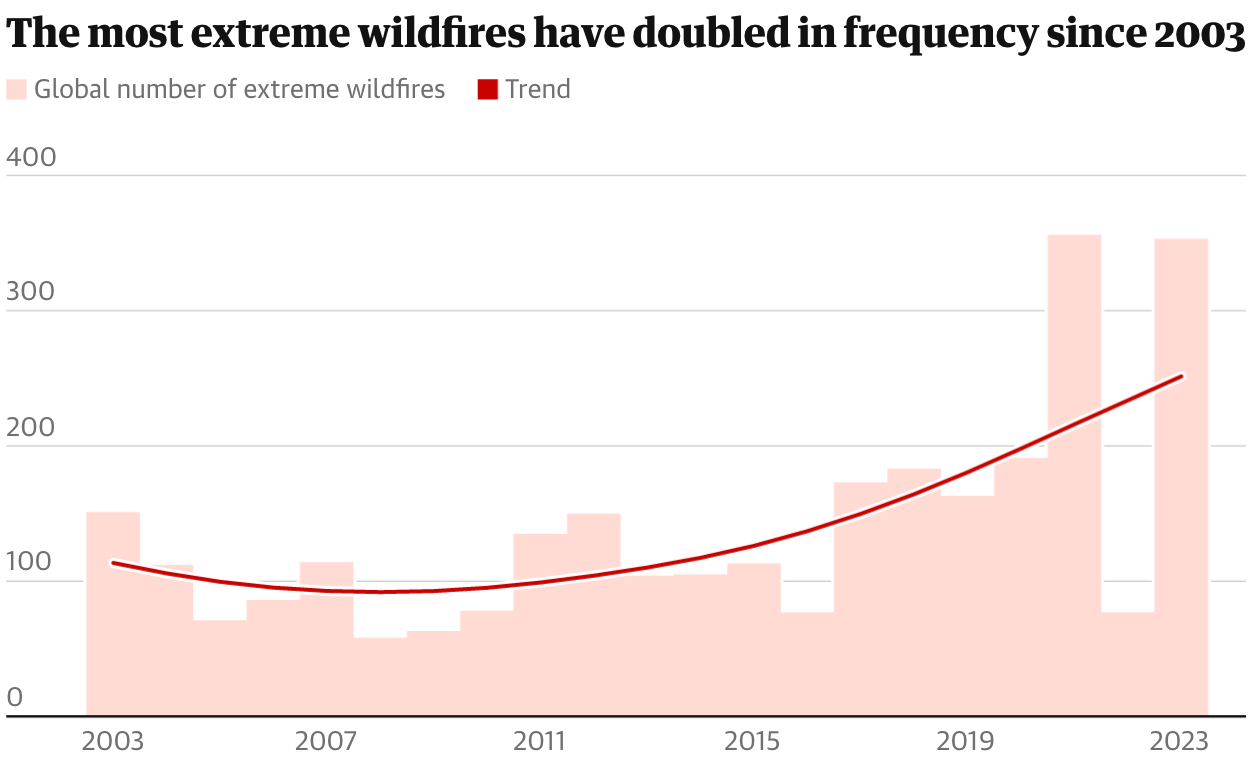To the premium subscribers, thank you for your support—it allows me to write these deep-dive briefings and continue to provide the weekly newsletter for free. The next two deep dives are EO for Nature & Biodiversity (December 1) and the State of Weather (January 5).
To the free subscribers, this is a short preview. If you would like to read more, please upgrade your subscription. In any case, you should continue to receive the free weekly newsletter as usual.
Preamble
Wildfires have existed for as long as plant life has existed on Earth. Not all fires are destructive—wildfires help clear nutrients in the soil and open access to sunlight while killing certain problematic insects and diseases. Some tree and plant species even depend on the heat from a fire to open up their seeds. This is why fire experts and land managers set fires to existing ecosystems under specified weather conditions to restore health to ecosystems that depend on the fire.
But when they get out of control, wildfires can become dangerous - costing the US economy between $394 billion and $893 billion annually, beyond immediate wildfire damage, including impacts to real estate value, premature deaths, and health risks from wildfire smoke, threats to watersheds; and income loss. Wildfires develop where there is available combustible vegetation and an ignition source, such as from lightning strikes or human activity, accidental or intentional. While roughly four out of five wildfires are started by people (varies by country), dry weather, droughts, and strong winds - all impacted by climate change - transform a spark of fire into wildfires consuming tens of thousands of acres.

Several scientific studies over the years have shown that human activity and a changing climate are increasing the frequency and severity of wildfire events, creating new risks to human and environmental health. This is reflected in the changes in wildfire season length, frequency, and overall burned area. Research has also shown that wildfires are burning through our global carbon budget due to their double impact: an increase in carbon emissions from the burned trees and a decrease in the capacity of forests to absorb carbon dioxide.

This piece does not aim to dive deep into the science of wildfires or the effects of a changing climate on wildfires. Instead, it focuses on what Earth observation brings to the table, its role in identifying and monitoring wildfires, the market landscape for EO-based wildfire solutions, and a discussion on whether wildfire-related information will become a public good. A lot can be written on this topic (such as the impact of wildfires on nature and biodiversity). In the meantime, if you have any feedback, send it my way.

Here is what we have in store for this briefing:
- Context: Observing Wildfires
- The Fire Behaviour Triangle
- An Overview of Wildfire Contributing Factors
- EO for Wildfire Monitoring
- Relevant Technologies
- EO for Wildfires: Market Landscape
- Sensing, Monitoring, and Intelligence
- Outlook: Towards a Public Good?
Context: Observing Wildfires
Wildfires represent a complex, multiscale problem—a confluence of biological, meteorological, physical, and social factors influencing their likelihood, behaviour, duration, extent, and outcome. As a result, the observational infrastructure also requires a multimodal solution, from connected sensors and cameras on the ground to satellites in multiple orbits. But what do we really observe when we say we monitor wildfires?
The Fire Behaviour Triangle
The "fire behaviour triangle" provides a framework for identifying the key variables that affect how a wildfire behaves. Fuel is anything that burns, including both live and dead vegetation, from plants and trees to leaves and saplings. Weather indicators and topographic conditions affect how fast fires spread.
These three variables determine a fire's behaviour - speed, direction, and flame characteristics and intensity. Using this framework, the section below discusses the 14 wildfire contributing factors.







